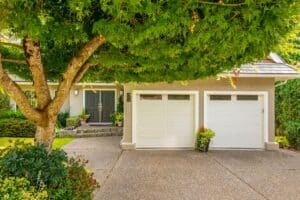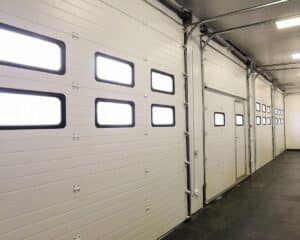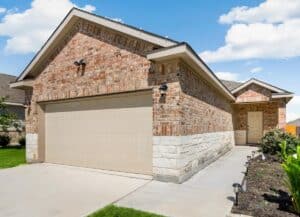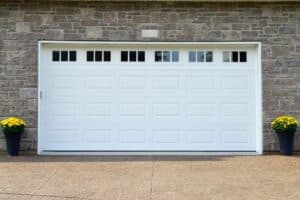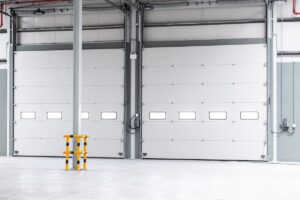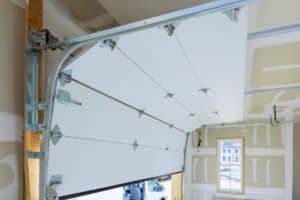Garage doors play a pivotal role in the facade of a home, serving both functional and aesthetic purposes. This section will explore why maintaining your garage door is essential not only for security but also for boosting your home’s overall curb appeal.
Curb appeal can significantly influence the perceived value and attractiveness of your home. An appealing garage door integrates well with the overall theme of your exterior, enhancing the first impression your home makes on visitors and potential buyers.
Seasonal Maintenance Tips
Maintaining your garage door involves periodic tasks that vary with the seasons. These regular checks and maintenance routines not only enhance the appearance of your door but also ensure its functionality and durability throughout the year.
Spring: Cleaning and Refreshing
Spring offers a great opportunity for a comprehensive cleaning and general maintenance of your garage door. Start with a thorough wash of the door’s exterior using a mild soap and a soft brush to remove dirt and grime accumulated over the winter. Inspect the door for any signs of rust or corrosion, especially if you have a metal door.
Treat any rusted areas and repaint chipped or peeling paint to prevent further damage. Additionally, check the weather stripping and seals for any signs of wear or damage, replacing them as needed to ensure they continue to protect your garage from water and pests.
Summer: Protecting from Heat
During the summer, your garage door is subjected to high temperatures and intense sunlight, which can be harsh on materials like wood and metal. Regularly inspect your door for signs of heat damage, such as warping, fading, or discoloration.
If your door is wooden, consider applying a fresh coat of paint or sealant to help protect it from the UV rays. For metal doors, ensure that any protective coatings are intact to prevent the metal from overheating, which can lead to expansion and difficulty in operation. Keeping the door’s moving parts lubricated can also prevent them from stiffening or getting stuck due to the heat.
Fall: Preparing for the Cold
Fall maintenance is crucial in preparing your garage door for the colder months. Begin by checking the balance of the door to ensure that it hasn’t shifted with the changing temperatures, which can happen naturally over time. Check and replace the seals and weather stripping if they’re not providing adequate insulation, as these are crucial for keeping the cold out and the heat in, reducing your energy costs.
Clean and lubricate the moving parts such as springs, hinges, rollers, and tracks to ensure smooth operation during the winter, when these components are often prone to freezing.
Winter: Keeping It Functional in Extreme Weather
Winter presents unique challenges for maintaining your garage door, primarily due to the cold temperatures and accumulation of snow and ice. These elements can severely affect the functionality of your door and, if not properly managed, can lead to damage or operational failures.
Choosing the Right Materials for Durability and Style
Selecting the appropriate material for your garage door is crucial not only for the aesthetics of your home but also for ensuring longevity and functionality. The material you choose can dramatically influence the curb appeal, maintenance requirements, and durability of your garage door.
Material Options for Garage Doors
Wood: Wood is prized for its natural beauty, versatility, and traditional appeal. It can be crafted into various styles and customized with different finishes. Wooden doors can complement a wide range of architectural styles, from classic to contemporary.
Steel: Steel is one of the most popular materials for garage doors due to its durability, strength, and relatively low maintenance. It is highly resistant to warping, cracking, and weathering, which makes it a practical choice for many homeowners. Steel doors can also be insulated to improve energy efficiency.
Aluminum: Aluminum doors are lightweight, rust-resistant, and durable. They work particularly well in coastal climates where corrosion from salt air is a concern. Aluminum can be finished in a variety of ways to mimic other materials and is available in a wide range of styles and colors.
Fiberglass: Fiberglass doors offer the look of wood without the maintenance. They are resistant to warping, cracking, and denting. Fiberglass is lightweight and can be translucent, which allows natural light into the garage without compromising privacy.
Benefits of Each Material
Wood: The timeless appeal of wood enhances the curb appeal of any home and offers superior aesthetic versatility. However, wood requires regular maintenance, including painting or staining to prevent moisture damage and decay.
Steel: Steel doors provide excellent security and durability at a cost-effective price. They can be painted in a variety of colors and finishes, including those that mimic wood grain. Steel is also a good insulator, especially when combined with insulation materials, making it energy efficient.
Aluminum: Aluminum is best known for its resistance to rust and corrosion, making it an ideal choice for harsh or humid environments. It’s also lightweight, which puts less strain on garage door mechanisms and prolongs their lifespan.
Fiberglass: Fiberglass is incredibly versatile in terms of appearance, able to replicate the look of wood without the associated upkeep. It’s an excellent choice for those who want the best of both worlds in terms of style and durability.
When choosing the material for your garage door, consider the climate of your area, the style of your home, and how much maintenance you are willing to undertake. Each material offers unique benefits, so selecting the right one can significantly enhance the functionality and appeal of your garage door.
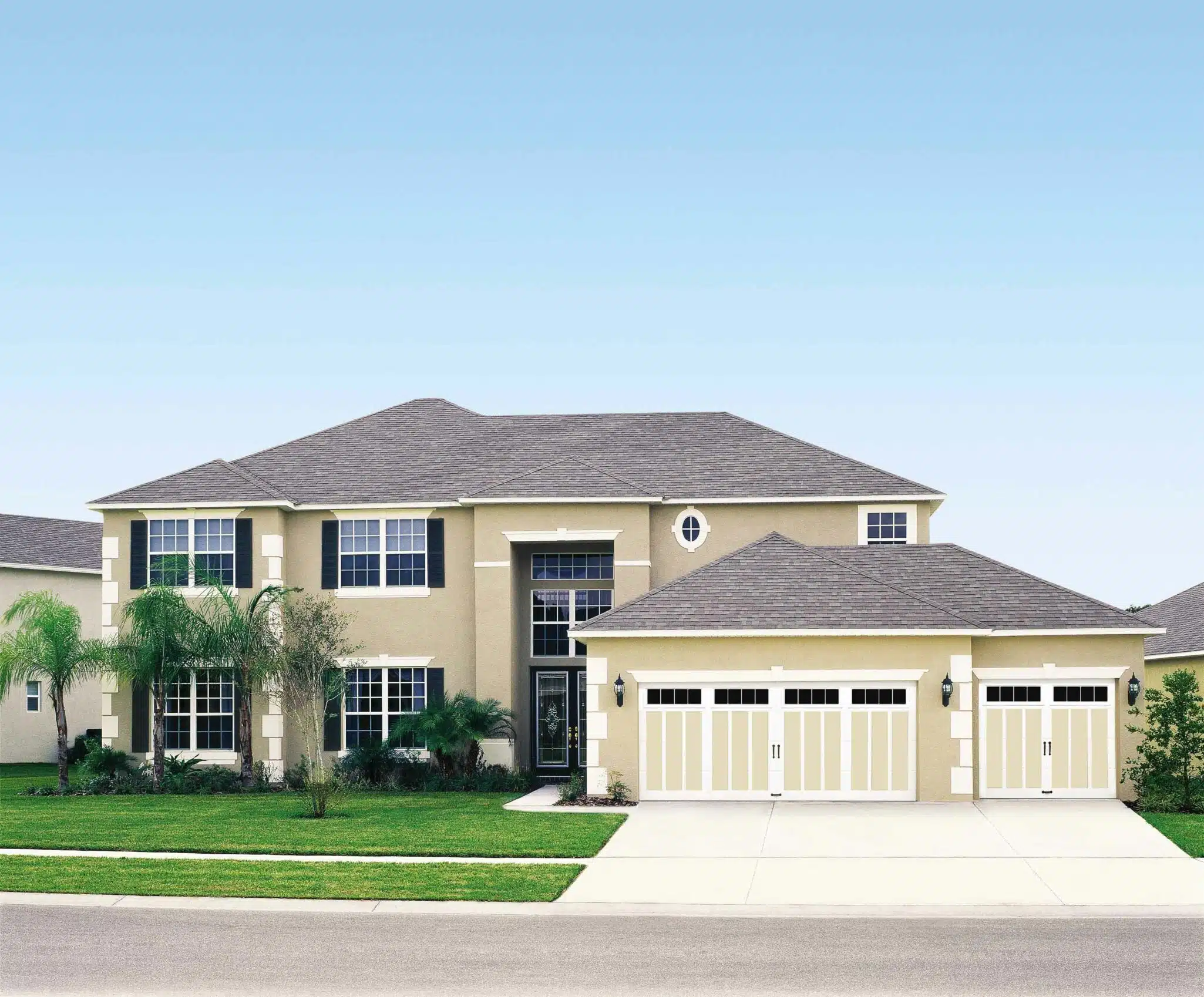
Enhancing Curb Appeal with Design and Color
Choosing the right design and color for your garage door is essential for creating a harmonious look that enhances the overall curb appeal of your home. It’s important that the garage door complements the architectural style and color scheme of your house, contributing positively to the first impression it makes.
Current Trends in Garage Door Styles
Contemporary Designs: Modern homes often benefit from garage doors with clean lines and minimalist patterns. Contemporary garage doors might feature sleek materials such as tempered glass panels set in aluminum frames, or simple, flush panels that offer a smooth, uncluttered look. These designs suit the modern aesthetic of architectural minimalism and can be custom-fitted with innovative hardware and finishes.
Traditional Designs: For homes with a more traditional architectural style, classic wooden doors with raised panels, intricate window inserts, and ornate hardware can add charm and character. These doors often emulate the craftsmanship of past eras and blend beautifully with the home’s existing features like window shutters and wooden entry doors.
Carriage House Doors: A blend of traditional charm and rugged appeal, carriage house garage doors are designed to look like the swinging doors of old carriage houses but operate with the convenience of a modern overhead garage door. Often made of wood or composite materials, they can add a historical touch to both new and old homes.
Choosing Colors to Complement Your Home
Matching the Home’s Exterior: When selecting a color for your garage door, consider the primary and secondary colors of your home’s exterior. A garage door that matches the house’s main color can make the property appear larger and more cohesive. For example, a beige house with a beige garage door can have an elegant and unified appearance.
Contrasting Boldly: If you prefer your garage door to stand out, choose a color that contrasts with your house’s main color but still harmonizes with the overall palette. A dark-colored door on a light-colored home can draw attention to the door as a focal point, while a brightly colored door can add a pop of personality and flair.
Harmonizing with Accents: For a subtle effect, you might choose a garage door color that matches the trim or the accent color of your home. This approach ties the elements of the home’s facade together and creates a sophisticated, coordinated look.
Using Natural Finishes: Natural wood finishes are versatile and can complement almost any color scheme while adding warmth and texture. If you choose a wood garage door, consider a stain that highlights the wood’s natural grain and matches or harmonizes with other wooden elements of your home.
By thoughtfully selecting the design and color of your garage door, you can significantly enhance the curb appeal of your property. Whether your aim is to blend seamlessly with your home’s architecture or to make a bold statement, the right choices can transform the overall impact of your garage door on your home’s exterior aesthetic.

Regular Maintenance and Care
Consistent and regular maintenance is essential to ensure the longevity, functionality, and aesthetic appeal of your garage door. Engaging in routine upkeep not only helps prevent unexpected breakdowns but also extends the life of your door.
DIY Maintenance Tips
Regular maintenance tasks can often be carried out by homeowners without the need for professional assistance. Here are some practical tips for maintaining your garage door:
Cleaning: Keep your garage door clean by washing it with a mild detergent and a soft brush at least twice a year. This will not only keep it looking fresh but also allow you to inspect the door for any damage or wear that may need further attention.
Lubrication: One of the most important maintenance tasks is to lubricate the moving parts of the garage door system, including rollers, hinges, and springs. Use a silicone-based lubricant or a product specifically designed for garage doors. This should be done every three to six months to ensure smooth operation and to prevent noise and wear from friction.
Alignment Check: Periodically check the alignment of the garage door tracks. Misaligned tracks can cause the door to not operate smoothly and even become stuck. You can adjust the brackets holding the tracks to the walls but for major adjustments, it might be safer to call a professional.
Inspect Weather Stripping: Check the weather stripping around the garage door for cracks and brittleness. Replace the stripping if necessary to keep your garage insulated and protected from water intrusion.
Test Safety Features: Test the garage door opener’s safety features, such as the mechanical and photocell safety reverses. Place an object like a roll of paper towels in the path of the door to see if it reverses when it hits the obstruction.
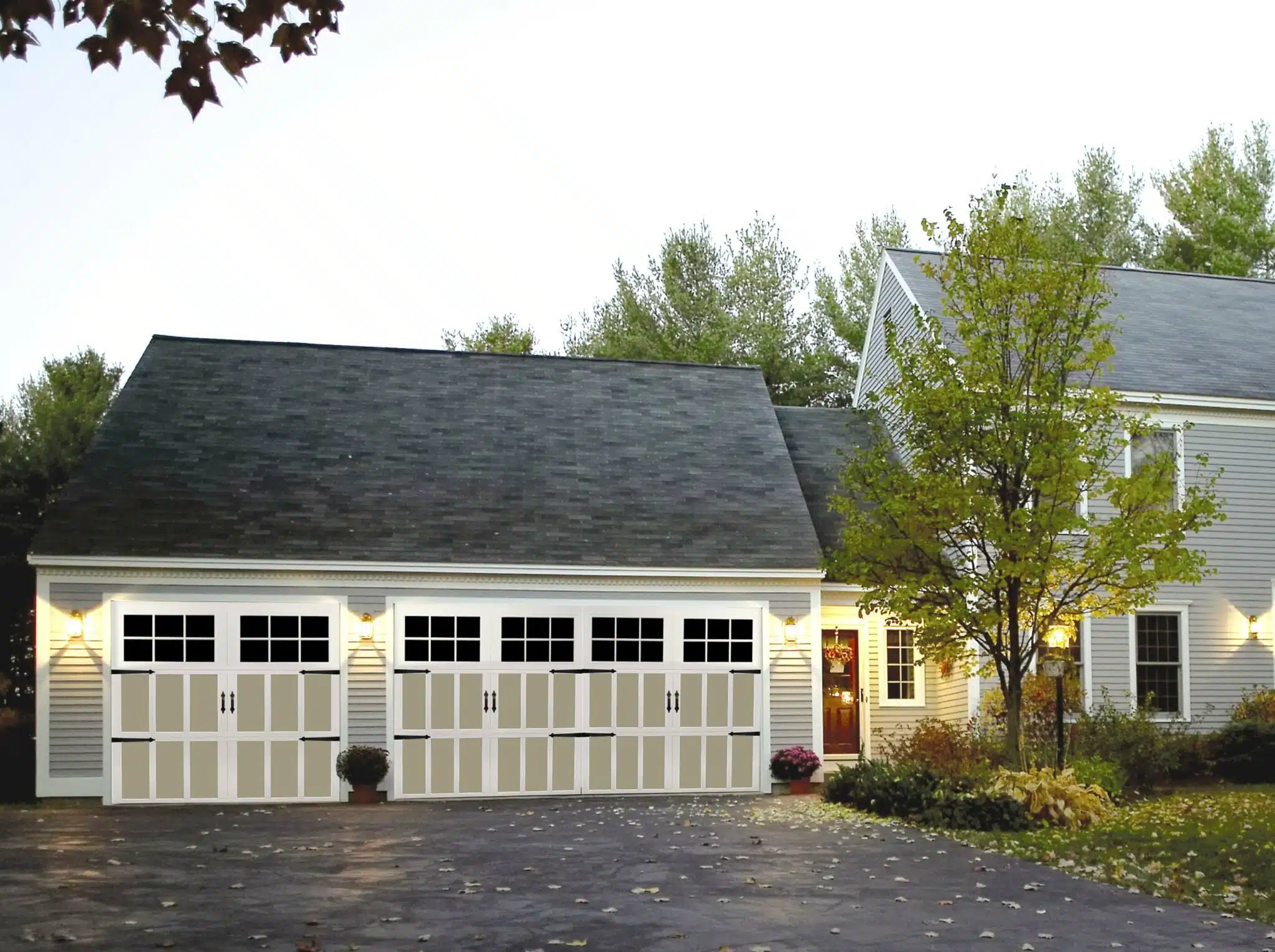
When to Call a Professional
While many maintenance tasks are within the capabilities of most homeowners, there are certain situations where it is advisable to call a professional:
Spring Replacement: Garage door springs are under high tension and can be dangerous to work with. If your springs are worn out or broken, hiring a professional to replace them is the safest option.
Track Alignment and Repair: If the tracks are significantly misaligned or damaged, professional repair is necessary to ensure the door operates correctly and safely.
Opener Repair: If there are issues with the garage door opener, a professional can diagnose and fix problems related to the motor or electrical components.
Annual Inspection: Even with regular maintenance, having a professional inspect your garage door system annually can help catch issues that might not be obvious to you. This can prevent costly repairs and extend the door’s lifespan.
Regular maintenance will keep your garage door operating smoothly and enhance its durability and appearance, but recognizing when to call in a professional is key to ensuring safety and the proper functionality of your garage door system.
FAQs
Maintaining your garage door enhances security, boosts curb appeal, and increases the overall value of your home.
Common materials include wood, steel, aluminum, and fiberglass, each offering different aesthetics and durability.
Materials like wood require regular painting or staining, while materials like steel and aluminum may need less frequent upkeep but should be checked for rust and corrosion.
Clean the door, check for rust, repaint chipped areas, and replace worn weather stripping and seals.
Inspect for heat damage and ensure protective coatings are intact. Apply fresh paint or sealant as needed, and lubricate moving parts.
Check the balance of the door, replace seals and weather stripping, and lubricate moving parts to ensure smooth operation during cold weather.
Trends include contemporary designs with clean lines, traditional designs with intricate details, and carriage house doors that offer a blend of old-world charm and modern functionality.


